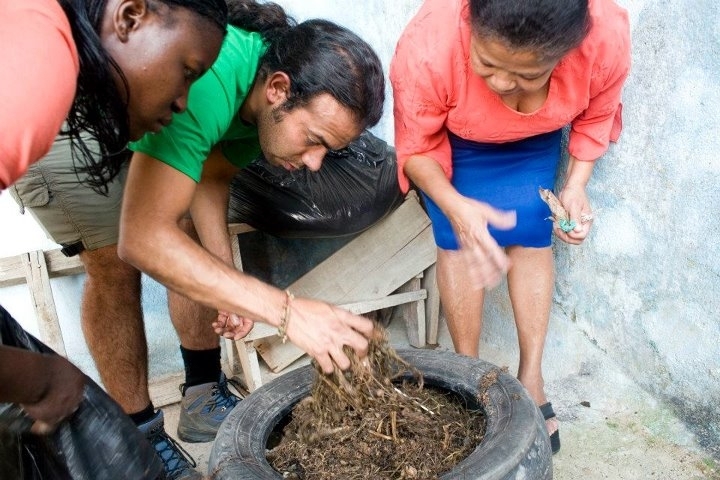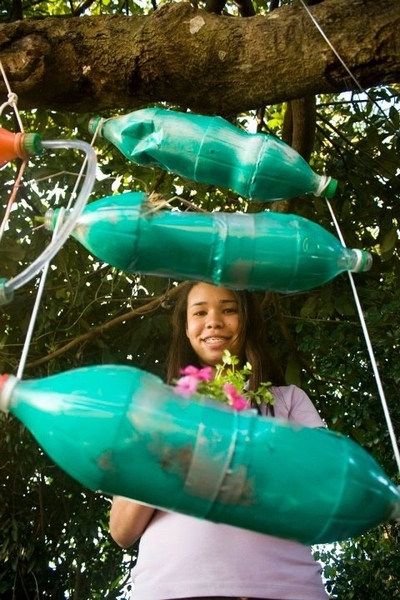Brazilian waste pickers, called catadores, are highly adept at making the most out of their nation’s waste. But a monthlong summit co-led by MIT engineers worked with them to find ways of further expanding the recycling and repurposing of waste materials, finding ways to produce food in close-packed urban favelas, or shantytowns, and ways to turn trash into floor tiles, among other projects.
The event, the sixth annual MIT-spawned International Development Design Summit (IDDS), was the first to be held in Latin America, the first to be conducted entirely bilingually, the first with an urban focus, and the first to be largely organized by local people in the host country.
Hosted in three separate communities around Sao Paulo, the 2012 IDDS included more than 40 participants from around the world. Some of the projects hatched by the event are ongoing, and some will be further developed during fall-semester classes at MIT and during student and staff trips to Brazil next January.
MIT senior lecturer and IDDS founder Amy Smith, who also created and runs the D-Lab series of courses and field trips, spent most of her time with one of the three groups, centered in the favela called Dos Palitos. That team worked on three projects: developing vertical gardens to provide healthy food in dense urban settings; making low-cost flooring, out of recycled materials, for use in the mostly dirt-floored houses in the community; and developing financial-planning tools to help local people set and achieve realistic financial goals.
Local IDDS organizers and community partners suggested the gardening effort, says Jessica Huang, a D-Lab instructor who worked with that team in Brazil: “There are a lot of people interested in gardening, and some people doing it, but only those who had space.” The team explored ways of growing small-scale crops, such as herbs, and ways of making vertical arrays of planters from inexpensive or free materials, such as used soda bottles, that could hang on a wall or from a tree, Huang says. They also examined composting methods to provide soil for these gardens.
The flooring team came up with an innovative approach, Smith says: They heat-sealed a combination of cardboard-based packaging and plastic bags together “in a way that was durable, rugged and beautiful.” Members of the team plan to continue pursuing the project, which has the potential to turn discarded materials into something of value for members of the community — and potentially even into a saleable product.
Another effort to make creative use of waste materials was one team’s work to cut discarded plastic soda bottles into thin strips for weaving into baskets, mats and other products, while another team worked to make durable construction bricks out of soil and cement.
Smith is hoping that this year’s IDDS program could evolve into a long-term innovation center in Sao Paulo, providing help for people who want to develop new projects and useful products for their own use or for resale as part of small local business ventures. She is seeking funding for the ongoing project, which could also lead to a regular, locally organized IDDS in Brazil.
“We had a great experience there,” Smith says. “The local organizing committee brought new ideas.” This year’s work was more specifically focused on directly meeting the needs of local people, rather than on the creation of products that could lead to new global businesses, she says.
Helping people use discarded materials to create things that they could use or sell was a satisfying process, she says. For the local waste-pickers, who primarily sell materials in bulk to companies that process them, “If you can make something of high value, that’s the best thing,” Smith says.
International summit fosters ways of producing everything from food to flooring, using discarded materials.
Publication Date:

Caption:
Participants in this year's IDDS worked on ways of cutting discarded soda bottles into strips that could be used to make woven products.
Credits:
Photo: Miho Kitagawa

Caption:
Discarded materials such as these on the streets of Sao Paulo, Brazil, could become raw material for a variety of useful, and potentially salable, products. Participants from around the world at this year's International Development Design summit in Brazil worked on ways of creating value from waste material.
Credits:
Photo: Miho Kitagawa

Caption:
One of the IDDS teams worked on producing compost to help urban gardeners grow some of their own food.
Credits:
Photo: Mauricio Martinez Miramontes

Caption:
Planters made from old soda bottles and hung from a tree or a wall could provide a way for urban dwellers, even with very limited space available, to do some small-scale gardening.
Credits:
Photo: Mauricio Martinez Miramontes

Caption:
One IDDS team focused on developing a method for making durable, low-cost building bricks out of soil and cement.
Credits:
Photo: Anna Lúcia dos Santos Vieira e Silva





